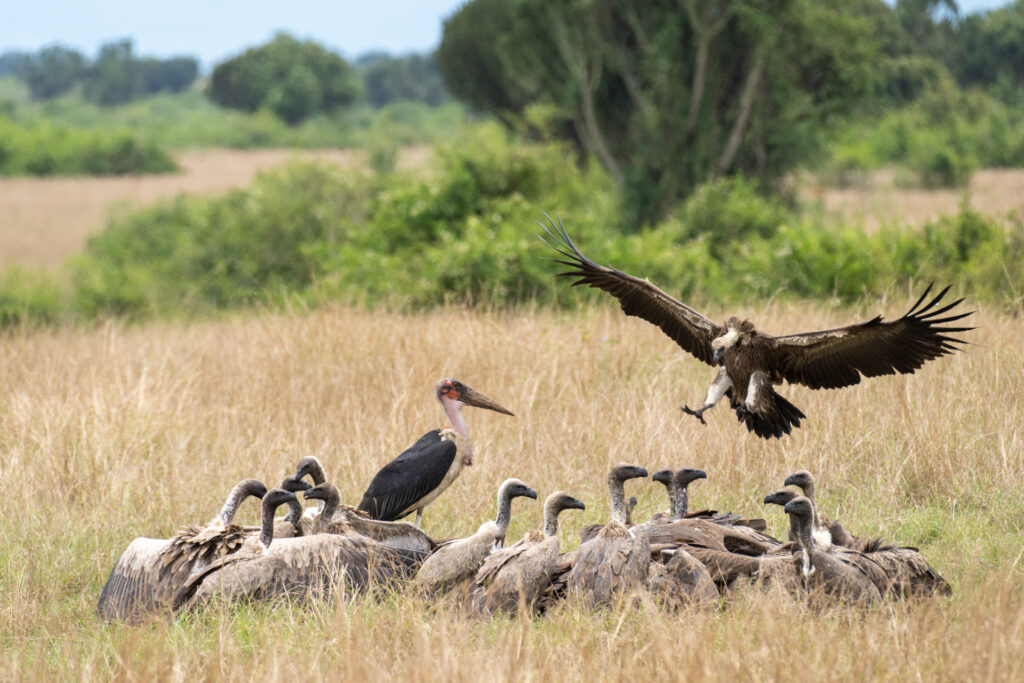Vultures are a highly intelligent group of birds that provide important ecosystem services. Yet, populations of old-world vultures decreased dramatically in the last decades owing to anthropogenic factors. At the same time, their behaviour including social interactions are still poorly understood. Building on high-tech tracking equipment and AI-based analytical tools, GAIA aims at better understanding how vultures communicate, interact and cooperate, forage, breed and rear their young. This understanding is crucial to the development of the GAIA early-warning system for environmental changes and critical ecological incidents as well as to the protection and conservation of vultures.



Dead animals i.e. carcasses are omnipresent in natural environments. Within well-functioning ecosystems, carcasses are consumed by other animals which is part of the natural cycle. Scavengers such as vultures are key to these processes. They efficiently remove carrion and by that potentially toxic and infectious material from the environment, reducing the risk of spread and contamination. Stunning eye-sight allows them to spot carcasses from a large distance. It is assumed that they are also socially connected through complex interactions and use signals to coordinate their foraging behaviour.
Over the last decades, many vulture species have become critically endangered since their numbers decreased dramatically. The main drivers for this trend are loss of habitat and food in human-dominated landscapes and a notable amount of direct or indirect poisoning. For the white-backed vulture (Gyps africanus), for example, it is estimated that the population decreased for about 90% over the span of just three generations – averaging a decline of 4% per year.
Because of their ecological importance and rapid decline, it is necessary to significantly improve our understanding of vultures in order to protect them. Basic biological data was collected for many years and with the development of light-weight sensors, more research is currently been conducted than ever before. Still, it is a challenge to obtain reliable data on population density, , breeding and social interaction in many of the range countries of old-world vultures since they roam over great distances and huge amount of data needs to be analysed. GAIA will contribute to increasing our knowledge about how vultures communicate, interact and cooperate, forage, breed and rear their young. The team focuses its research on population density, chick survival rate and breeding behaviour, diet and foraging behaviour as well as social interaction and cooperative behaviour. Further research topics are information transfer between adults and chicks, detection and prevention of poisoning and the determination of other causes of death like electrocution or drowning in artificial waters.
The GAIA research on African vulture species such as Gyps africanus relies on equipping a large number of individual birds with GPS/ACC tags all across the continent. The majority of the currently 130+ tagged birds have been captured in Etosha NP in Namibia. Tagged individuals fly above Namibia and its neighbouring countries, but a notable number of vultures have been equipped with GAIA tags in Uganda, Mozambique and other countries as well. Second technological pillar of the GAIA vulture research are advanced AI-based analytical tools that allow the team to efficiently analyse this massive data set. In doing so, new insights into subject matters that have been impossible to study before are being gained. Additionally, these insights allow for the early detection of poisoning cases and thereby for the aid of the protection of vultures. Last but not least, understanding the behaviour and interaction of vultures will also be of great help for the development of new technological tools by the GAIA team.




